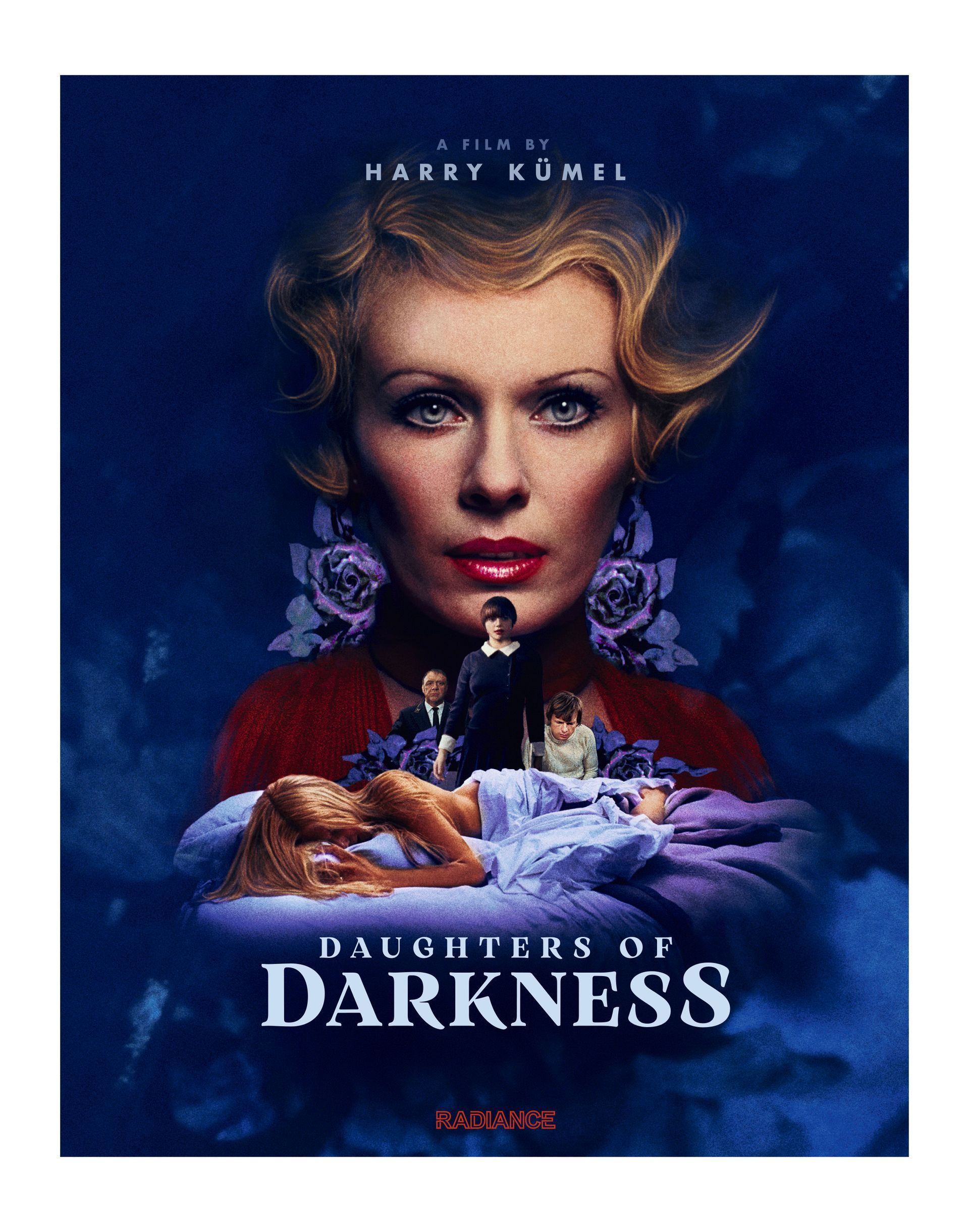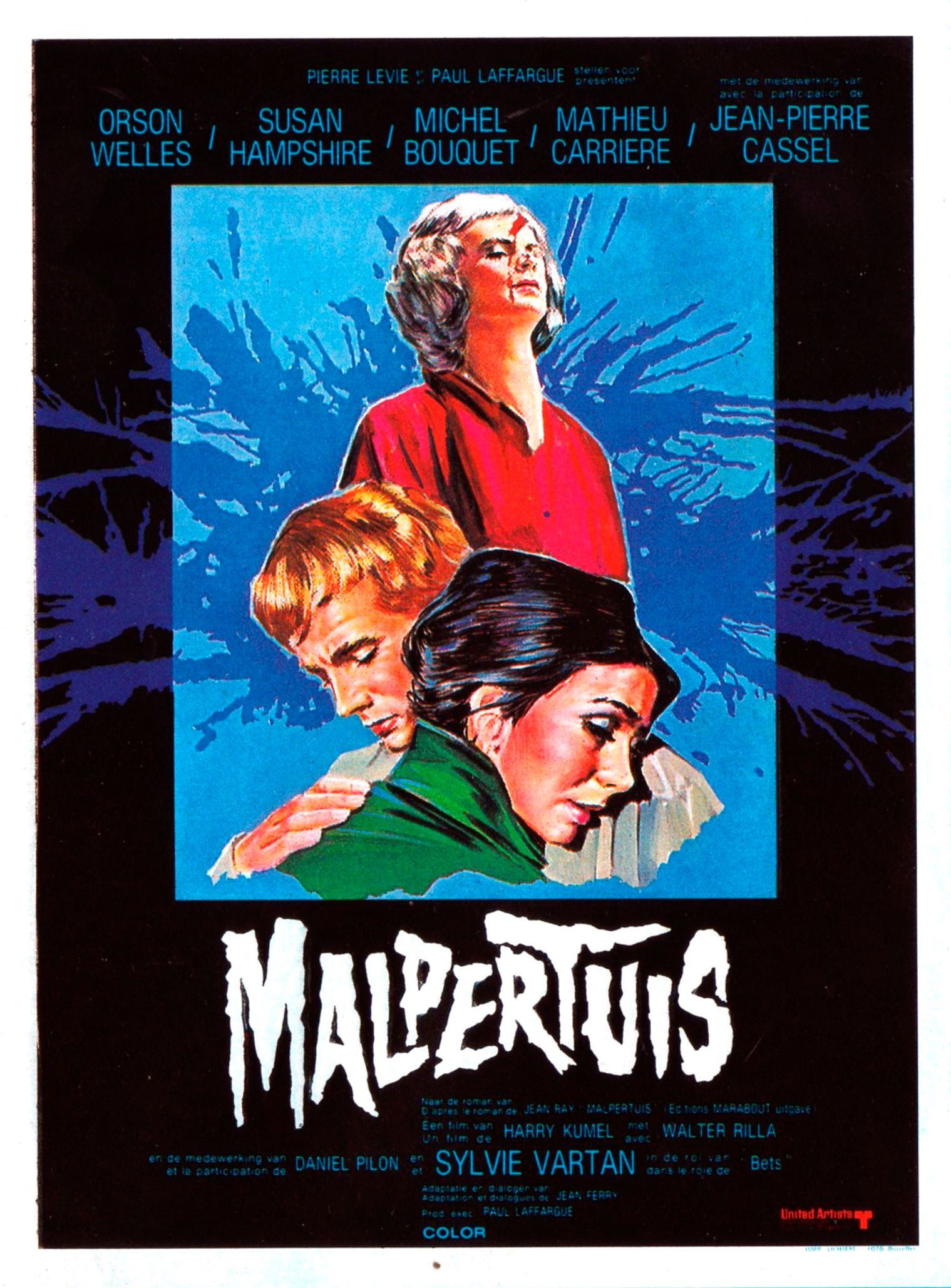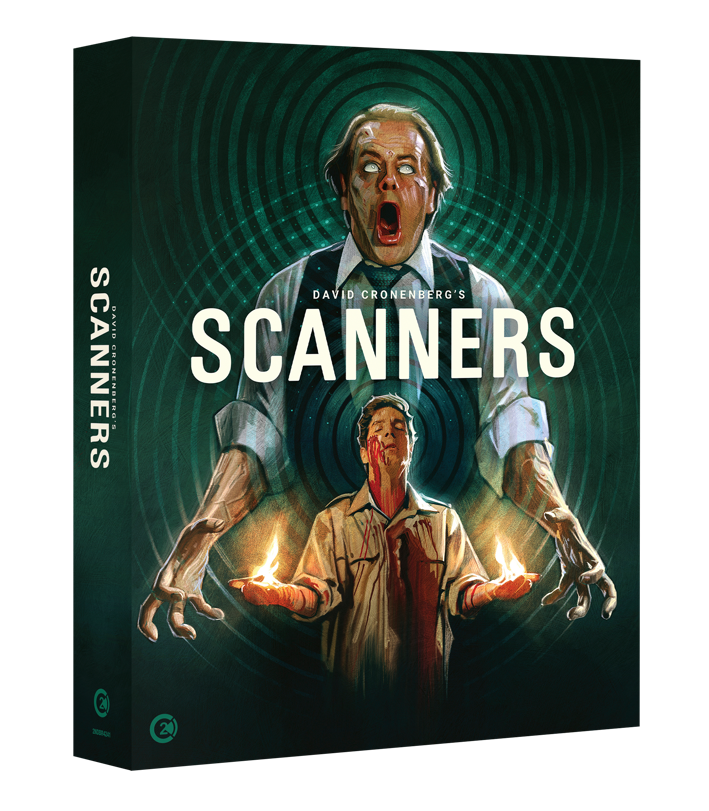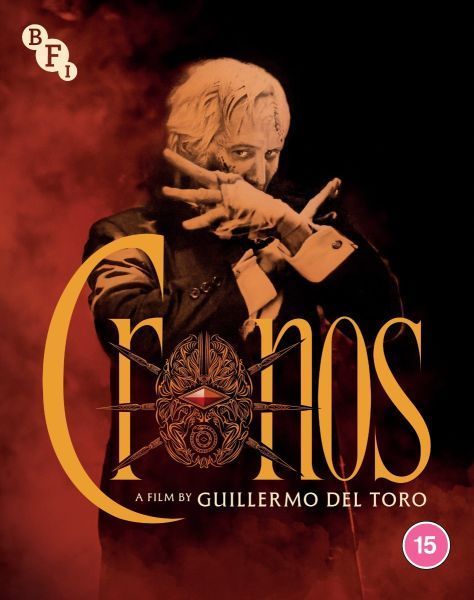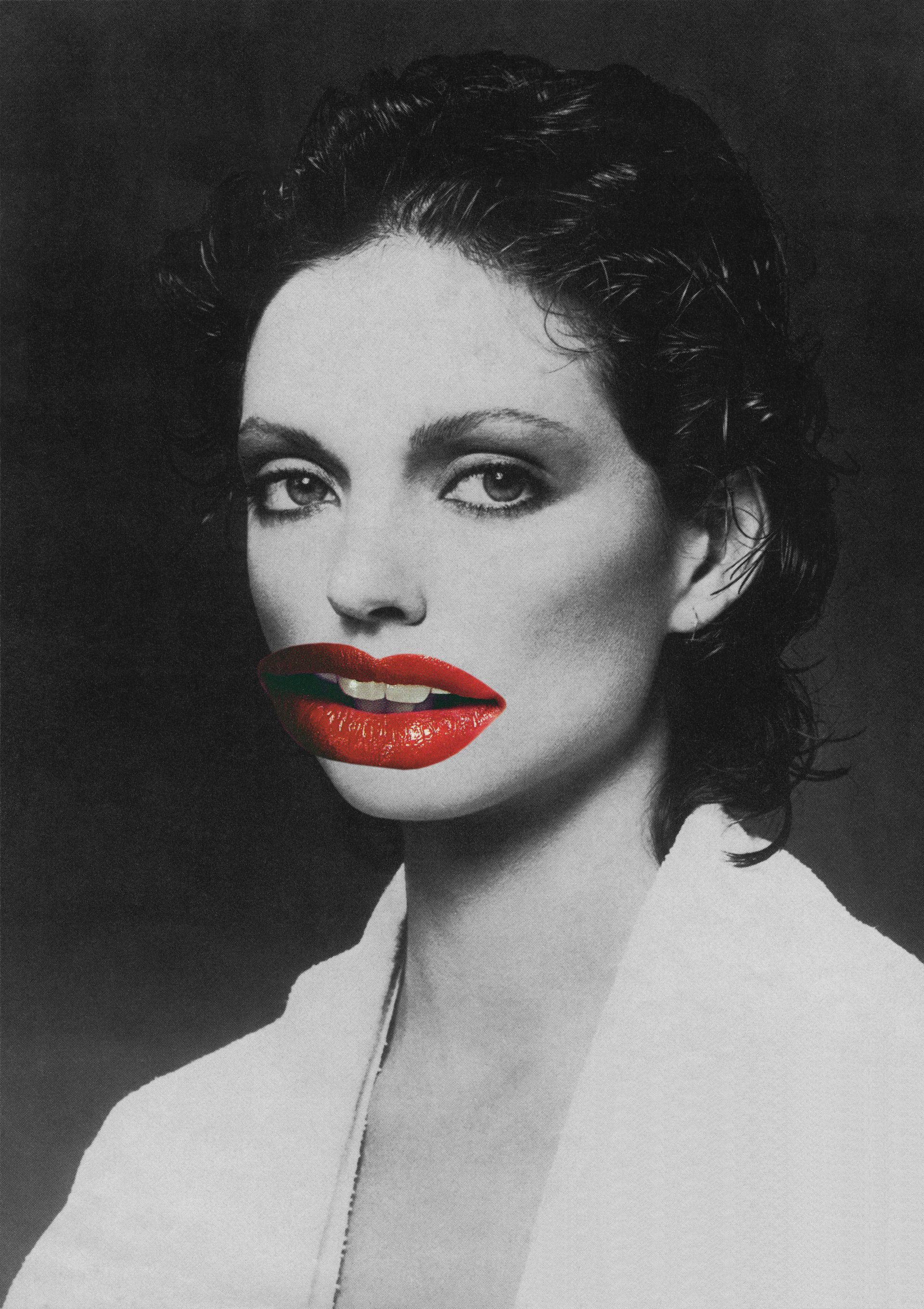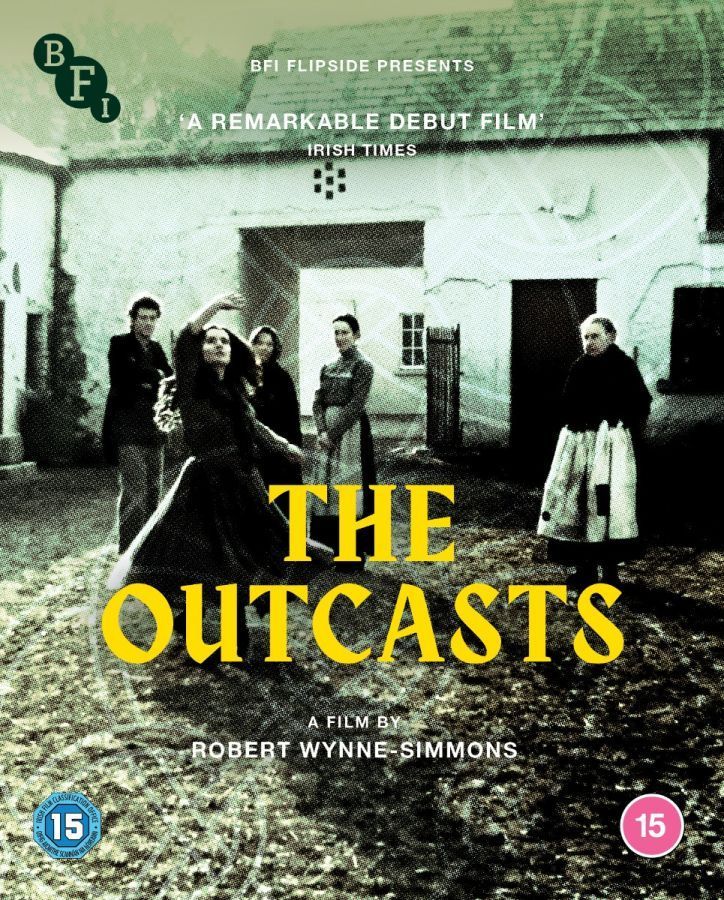Exhibitions-General
Exhibitions-General
Exhibitions

Robots, Top Secret, Into the Unknown
Robots – Science Museum
The rather creepy, realistically writhing baby hanging in mid-air at the exhibition entrance partly prepares you for a little of the occasionally disturbing world of the mechanoids.
The geared astrolabe, tentatively dated c 1300AD, does not merely reflect the ‘fixed’ stars of the heavens; it shows the motion of our moon with impressive accuracy. Just as carefully crafted is the ‘Mannikin’ (1582-1600), a skeletal suit of armour that could have been made for one of Dr Pretoius’ creations from the 1935 ‘Bride of Frankenstein’. The early clockmaker’s work is well represented, their art informing robotics as well as beautifying the houses of the rich and powerful of past ages.
Continuing the astronomical theme, the mainly 18th Century Sun, Earth and Moon, and full solar system orreries on display are beautifully engineered instruments, even though their scientific value may have gone a little unnoticed in the grand houses where they were often simply a distraction for honoured guests.
The famous Silver Swan (1773) of Bowes Museum, Barnard Castle takes pride of place, its highly detailed silver ‘feathers’ glittering, even though the silver bird is disappointingly, motionless. The video of the swan dipping its head to catch a ‘fish’, swimming about in the glittering glass water is no substitute.
‘The Draughtsman’ manikin is perhaps the most impressive piece of work here, capable of complex and beautiful calligraphy and artwork, and also the earliest true ‘humanoid’ robot displayed here. The detailed German automaton spider (c 1604) holds who knows what terrible secrets in its body, and the wooden crucifixion scene is a surprising confection from an age when the established churches may have regarded it as borderline blasphemous. The early anatomical figures are amazingly detailed, the flayed bodies in strident classical poses as they show off their skeletons, muscles or organs to the medical students of past centuries.
The sleek, art deco female robot from the set of ‘Metropolis’ guards the door to our next room, perhaps as a bridge between science and superstition; cineastes will recall that she is imbued with life by a scientist/magician, his right arm raised in a commanding gesture, electrified circles of light pulsing around her, a huge inverted pentagram emblazoned on the wall of his temple-like laboratory.
#The large collection of 50’s and 60’s toy robots and robot-based comic books will delight all those who remember them, and probably mystify anyone younger. The real prize in this room is, however, the life (and larger than life) size robots from the mid-20th Century. The gigantic, ‘RUR’ 1949 model, knight-like in his cylindrical helmet and pointed boots, looks as if he was invented to fight future medieval style wars, whereas the 1951 Italian model ,with ’Ferrari’ style eye covers shows himself a capable dancer, in a piece of charming vintage footage.
We move into more modern times in the next room, with a skeletal French robot from 2010/2016, which nevertheless shows itself capable of sophisticated movement. The problem of replicating human ambulation was always a bugbear for early manufacturers, but now seems to have been largely solved. The tendency to design creatures which resemble cartoon humans is prevalent here, with information ‘bots nodding their heads and batting their eyelashes, and the soft toy like creatures, aimed at teaching autistic children empathy. The news reading Japanese robot (2014), creepily resembling a young woman, complete with eye and mouth movements, is perhaps too close for comfort, and so we take refuge in the highly specialised mechanoids such as ‘Baxter’ whose huge arms lift heavy weights and remember how to do so, a stylish trumpet-playing ‘bot, and others which perform highly intricate manufacturing processes. The thought that they could one day perform surgery on us is something we might want to consider more carefully.
Recent innovations include ‘bots which can officiate at weddings, some which respond to voice commands for simple tasks and some which can teach children basic life skills, even languages. The idea of ‘bots which can detect the early onset of illnesses such as diabetes, show perhaps the greatest promise here, balanced against the possibility that such machines may put many people out of work. In our rapidly changing, shrinking world, we marvel at the highly intelligent machines on show here, but maybe we should take time to reflect on the fact that in our haste to make best use of our dwindling natural resources, the one thing we are not running out of is people.
Scenester
5/3/17‘Robots’ runs at the Science Museum until 3/9/2017
http://www.sciencemuseum.org.uk/sitecore/content/scim/visitmuseum/plan_your_visit/exhibitions/robotshttps://beta.sciencemuseum.org.uk/robots/
Top Secret: From Ciphers to Cyber Security (Science Museum)
Coinciding with the 100th anniversary of GCHQ (Government Communications Headquarters), the Science Museum’s latest exhibition traces the evolution of codes and ciphers back to the days of ancient Rome and right up to the present. Displaying items which have only recently been declassified back to the simplest, yet once highly secure methods of message concealment, this is a rare opportunity to see how our security services works, and how other folk of a more dubious moral standpoint operate.
The simple methods of enciphering in ancient times belie their effectiveness, as the message written across the spiral of paper wrapped around a baton can demonstrate; unless you have a baton of exactly the same diameter, you won’t uunderstand a word of the message. Of course, the ancients foresaw that their enemies would simply try batons of varying size before they got the right one, and so the ‘Caesar’ cipher was born, the straight forward letter substitution cipher which underpins all ciphers from then on.
In wartime, protecting messages becomes paramount, and battlefield telephone lines were easily tapped, so the use of ciphers, the more complicated the better, became an essential defensive weapon. The equally essential job of discovering and deciphering enemy messages was a job for the specialists, a seemingly intractable problem the exhibition returns to many times.
The First World War intelligence gathered from ‘triangulation’, that is, three or more radio receivers pooling their information on the enemy’s radio signals to pinpoint a Zeppelin’s position, has its roots in the audio listening stations of the past. There is an excellent account of an attack on a ‘Zepp’, in the form of a letter written by a boy in Cuffley, who witnessed the great flare as the gas filled balloon exploded, and later saw the terrible injuries the pilot suffered. This letter to his uncle, himself in hospital due to sustaining injuries in battle, is both detailed and moving.
The essential job performed by the cipher clerks at Bletchley during the Second World War cannot be stressed too highly, and the mocked-up sparse work rooms, and the relatively simple equipment they used at their desks when working with the then state of the art ‘Colossus’ computer, is well presented. Little remains of the innards of this mechanical computer besides a few ‘bombes’ (rotors), as it was broken up and recycled for use in other machines. The understandably few photographs taken of the workplace are highly evocative of the period, and their orderly appearance gives little hint of the pressure these people were under to deliver a plaintext message before the information in it was out of date.
The collection of cipher machines is impressive; an actual example of the three barrel Enigma machine, sat in its own glass cabinet that would doubtlessly shriek with alarm if anyone touched it, and its counterpart, the reverse engineered Enigma, made by analysing deciphered messages and somehow divining the machine’s fiendishly intricate workings. The even more secure Lorenz machine is also on display here, a much larger affair which survived for many years, systems intact, finally defeated by Colossus and smaller ‘Tunny’ machines. The British Typex machine remained unsolved until after the Second World War, and the Soviet Fialka (1958) a small and seemingly innocent looking Cyrillic typewriter of hammered steel, was in use throughout the Cold War, but remained unknown to the West at that time. The British Syko machine (1943), covered in coloured buttons, looks more steampunk than Second World War, and has not been displayed publicly before, and the Alvis was used extensively during the Cold War for communications within NATO. The smallest item here, an innocent looking metal box with two connection sockets, the Thamer PC encryption drive from the early 21st century, will remain classified until 2030.
The historic telephones are, if anything, even more impressive, especially when you know who used them. With a hint of Dad’s Army nostalgia, Sir Winston Churchill’s ‘secraphone’ is here, a bruiser of a receiver with a ‘Normal’ and ‘Secret’ button which leave no room for doubt as to their use. The Secret red telephone, used by US President John F. Kennedy to speak to UK PM Harold MacMillan, looks anonymous enough, but utilised the ‘Pickwick’ system to encrypt the calls. The plate bears the charmingly old fashioned legend, ‘Speech is secure only when lamp glows’. HM The Queen’s telephone from 1995, a big, multi buttoned plastic affair, works only when a key is inserted, helpfully tagged ‘HM000001 ED1 Soc/000 HM The Queen’, as if anyone else would dare use it. It comes as a surprise, even though it shouldn’t be, that Her Majesty is the longest standing ‘customer’ of GCHQ.
A well laid out display about Helen and Peter Kroger (Lona and Morris Cohen) (1961) who spent many years divulging defence secrets to the USSR from a secret radio transmitter in their anonymous house in Ruislip is worth more than one visit. Their spying equipment, hidden in talcum powder tins, cigarette lighters and compartments in their home, is ingeniously designed, and the microdots, visible only when using the high power microscope, are particularly impressive. Their nefarious activities almost certainly helped the Soviet Union develop nuclear submarines, and they were honoured in the USSR on postage stamps. Their twenty year sentence was commuted when they were exchanged for British spy Gerald Brooke. Incredibly, some of the files associated with this affair are still classified.
The legendary Zircon spy satellite scandal of 1986 is laid out once more, with long term whistle blower Duncan Campbell making much of the fact that the UK satellite was built on public money and partly intended for spying on UK citizens. His TV programme ‘Secret Society’ did not get shown as intended, although some secret screenings did take place, and the Xeroxed flyers are evocative of the pre-digital communication age we lived in then. In this age of intrusive social media while our streets bristle with surveillance cameras owned by private as well as public interests, the issue of a single spy satellite may seem a small gripe, but it was a major scandal in its day. The search warrant for Campbell’s flat is a stark reminder of how much power the State has, and will use, when it feels threatened.
The giants of the code and cipher world, Alan Turing (recently honoured for his work during the Second World War) and Gordon Welchman have their moment here, as do many others whose parts were smaller but no less essential.
The exhibition ties up with audio commentaries from present day GCHQ staff who talk about their work in counter-terrorism, and the wide-ranging language skills which are a basic for this work. A display about today’s digital connectivity and the twin dangers of computer hacking and destructive viruses make plain the real threats inherent in the digital world, and finally the future, in the shape of quantum computers, is touched on.
The exhibition ties up with audio commentaries from present day GCHQ staff who talk about their work in counter-terrorism, and the wide-ranging language skills which are a basic for this work. A display about today’s digital connectivity and the twin dangers of computer hacking and destructive viruses make plain the real threats inherent in the digital world, and finally the future, in the shape of quantum computers, is touched on.
‘Top Secret’ runs to February 2020 but you should get to the Science Museum as soon as possible to see it. I shall say this only once; the location of the exhibition within the museum is, appropriately enough, not easy to find.
Scenester
7/8/19
Visit;
https://www.sciencemuseum.org.uk/see-and-do/top-secret
Into The Unknown: A Journey through Science Fiction Barbican
7/8/19
Visit;
https://www.sciencemuseum.org.uk/see-and-do/top-secret
Into The Unknown: A Journey through Science Fiction Barbican
Chronicling a subject like science fiction from its origins to the present day is ambitious, but the Barbican has managed to put together an eclectic exhibition of the history of this exciting mainstream genre. From its roots in the Victorian age, perhaps inspired by real-life explorers sailing off to far flung parts of the globe, encountering strange new plants, animals and people, sci-fi arrived just in time for a boom in printed fiction and an expanding audience, ready to devour it. With well-chosen examples of artwork, books, photographs, models, film props, screenings of film and TV shows, and multi-media interactive shows, visitors will be overwhelmed by the choice on offer.
Science fiction’s origins are well represented by precious, early copies of many classic books of the genre, and accompanied by modern, highly detailed models, such as the Nautilus submarine craft from Jules Verne’s ’20,000 Leagues Under The Sea’, and an extract from ‘Journey to the Centre of the Earth’, still impressive more than 58 years after its release. The animated Gulliver’s Travels (1939) shows how well these classic stories can be adapted to suit a very young audience, without losing any of their grown-up messages. The hothouse atmosphere of these proto-sci fi stories is well realised and shows the breadth of the genre, with books by the genre’s first superstar writer, HG Wells, alongside only slightly later work by HP Lovecraft, whose star would take considerably longer to rise. The artwork on the book covers is often equal to the stories within (Lovecraft’s ‘The Call of Cthulhu’ and Wells’ ‘The Island of Dr Moreau’).
Popular newspapers were keen to take up the form to keep readers interested in their content. The 1901 newspaper advertisement for a humble café shares page space with a depiction of the alarming prospect of a robotic barber, together with fanciful flying carriages and pleasure cruises to the sea bed.
Anyone who grew up with Ray Harryhausen’s extravagant fantasy films can’t fail to be impressed at seeing the highly detailed latex models of prehistoric creatures, and the appearance of a 1741 copy of Niels Klim’s satirical ‘Underground Travels’ is as impressive for its survival, as well as its content.
For sheer spectacle, the projection of those elegant spacecraft in ‘2001: A Space Odyssey’ onto high mounted screens takes the prize. To the strains of Strauss waltzes, this film, almost half a century old, still takes the breath away, with its depiction of elegant, manta ray-like ships and wheel-shaped satellites gently spinning in space.
The eyeball- frying visuals that accompany Sun Ra’s crazed, avant-garde jazz-funk music bring a dose of the defiantly unconventional here, and anyone who isn’t familiar with Afro Futurism should welcome it into their lives before it shoots off into another galaxy and leaves us behind.
The common film depiction of aliens as an obscenely ugly, homogenous, trigger-happy imperial lynch mob is not neglected here, with a set of the ‘Mars Attacks’ bubble gum cards, which inspired the Tim Burton film of the same name. Card titles like ‘Burning Flesh’ and ‘High Voltage Execution’ and aliens carrying off the women folk for who-knows-what evil purpose, was just too much for the concerned parents of the early 1960’s. After impassioned protests, these cards were withdrawn by the Topps Company, but not before a generation of kids had thrilled to the torture and mayhem of an imagined Martian invasion of earth.
The more sophisticated fantasies of Swiss artist H.R. Giger are represented here by his metal and leather ‘bone’ chair, a fiendishly designed throne for the megalomaniac in your life, and masks from ‘Alien’, arguably the greatest of all sci-fi films. His leonine faced, hooded eyed, dreadlocked female mask is beautiful and terrifying, as well as being suspiciously fashionable for the period. The breadth of imagination which went into every aspect of this film is simply staggering, and represented well here, with many pictures of the vault-like alien egg repository, close ups of the chilling reptilian creature itself, and John Hurt’s distressed space suit, with the helmet visor still intact. Thankfully no alien creatures are scurrying about the Barbican, looking for a new host.
The strong yet svelte curves of TV’s ‘Land of the Giants’ ‘Spindrift’ spaceship is a standout exhibit, a highly imaginative vision of a luxury interplanetary craft that treats its passengers to a visit to a dangerous, Swiftian world. The interactive rocket launching game may not light the fires of the hard core gamers out there, but its visuals are eye-popping enough for the rest of us.
The disturbing ‘Brave New Worlds’ section is by far the most interesting, a dragnet of fearful, dystopian visions of the future, from the bleak ‘Silent Running’ and ‘THX1138’ to the totalitarian nightmare of ‘Fahrenheit 451’. The highly sophisticated animation of ‘Ghost in the Shell’ competes with the bizarre live action of ‘Brazil’ and ‘High Rise’ in their respective views of futuristic urban life. The beautifully presented air trip through contemporary Tokyo in Pierre Jean Giloux’s ‘Metabolism: Invisible Cities’ is shown here in pin sharp high definition, a plug-in city, realised and improved upon.
A fair selection of sci-fi exhibits from television are welcome; Lost In Space’s top-heavy robot, inspiring some visitors to flail their own arms about, warning ‘Danger, Danger, Will Robinson’ and the gigantic, armoured knight from ‘RUR’ tower above us. ‘Dr Who’ is present and correct, with on-screen episodes seemingly beamed through a wormhole in space, where some of the ‘lost’ (wiped) episodes may still be accessed. It is arguable that the subject of sci-fi on TV deserves an exhibition on its own, and who knows what we may see before too long?
‘Into The Unknown’ runs at the Barbican, London until 1st September 2017
Scenester
25/6/17
https://www.barbican.org.uk/intotheunknown/
Popular newspapers were keen to take up the form to keep readers interested in their content. The 1901 newspaper advertisement for a humble café shares page space with a depiction of the alarming prospect of a robotic barber, together with fanciful flying carriages and pleasure cruises to the sea bed.
Anyone who grew up with Ray Harryhausen’s extravagant fantasy films can’t fail to be impressed at seeing the highly detailed latex models of prehistoric creatures, and the appearance of a 1741 copy of Niels Klim’s satirical ‘Underground Travels’ is as impressive for its survival, as well as its content.
For sheer spectacle, the projection of those elegant spacecraft in ‘2001: A Space Odyssey’ onto high mounted screens takes the prize. To the strains of Strauss waltzes, this film, almost half a century old, still takes the breath away, with its depiction of elegant, manta ray-like ships and wheel-shaped satellites gently spinning in space.
The eyeball- frying visuals that accompany Sun Ra’s crazed, avant-garde jazz-funk music bring a dose of the defiantly unconventional here, and anyone who isn’t familiar with Afro Futurism should welcome it into their lives before it shoots off into another galaxy and leaves us behind.
The common film depiction of aliens as an obscenely ugly, homogenous, trigger-happy imperial lynch mob is not neglected here, with a set of the ‘Mars Attacks’ bubble gum cards, which inspired the Tim Burton film of the same name. Card titles like ‘Burning Flesh’ and ‘High Voltage Execution’ and aliens carrying off the women folk for who-knows-what evil purpose, was just too much for the concerned parents of the early 1960’s. After impassioned protests, these cards were withdrawn by the Topps Company, but not before a generation of kids had thrilled to the torture and mayhem of an imagined Martian invasion of earth.
The more sophisticated fantasies of Swiss artist H.R. Giger are represented here by his metal and leather ‘bone’ chair, a fiendishly designed throne for the megalomaniac in your life, and masks from ‘Alien’, arguably the greatest of all sci-fi films. His leonine faced, hooded eyed, dreadlocked female mask is beautiful and terrifying, as well as being suspiciously fashionable for the period. The breadth of imagination which went into every aspect of this film is simply staggering, and represented well here, with many pictures of the vault-like alien egg repository, close ups of the chilling reptilian creature itself, and John Hurt’s distressed space suit, with the helmet visor still intact. Thankfully no alien creatures are scurrying about the Barbican, looking for a new host.
The strong yet svelte curves of TV’s ‘Land of the Giants’ ‘Spindrift’ spaceship is a standout exhibit, a highly imaginative vision of a luxury interplanetary craft that treats its passengers to a visit to a dangerous, Swiftian world. The interactive rocket launching game may not light the fires of the hard core gamers out there, but its visuals are eye-popping enough for the rest of us.
The disturbing ‘Brave New Worlds’ section is by far the most interesting, a dragnet of fearful, dystopian visions of the future, from the bleak ‘Silent Running’ and ‘THX1138’ to the totalitarian nightmare of ‘Fahrenheit 451’. The highly sophisticated animation of ‘Ghost in the Shell’ competes with the bizarre live action of ‘Brazil’ and ‘High Rise’ in their respective views of futuristic urban life. The beautifully presented air trip through contemporary Tokyo in Pierre Jean Giloux’s ‘Metabolism: Invisible Cities’ is shown here in pin sharp high definition, a plug-in city, realised and improved upon.
A fair selection of sci-fi exhibits from television are welcome; Lost In Space’s top-heavy robot, inspiring some visitors to flail their own arms about, warning ‘Danger, Danger, Will Robinson’ and the gigantic, armoured knight from ‘RUR’ tower above us. ‘Dr Who’ is present and correct, with on-screen episodes seemingly beamed through a wormhole in space, where some of the ‘lost’ (wiped) episodes may still be accessed. It is arguable that the subject of sci-fi on TV deserves an exhibition on its own, and who knows what we may see before too long?
‘Into The Unknown’ runs at the Barbican, London until 1st September 2017
Scenester
25/6/17
https://www.barbican.org.uk/intotheunknown/
(Victoria & Albert Museum, London)
I admit to having had small feelings of trepidation about this exhibition, as there do seem to have been a lot dealing with the same time period in recent years, and some have definitely disappointed me. I’m still weighing up the pros and cons of this one, so maybe that’s a good sign.
Starting five years outside of the ’66 timeframe, the ever popular subject of the Profumo Affair is trotted out once more, with a copy of the famous Arne Jacobsen ‘Ant’ chair in amongst pictures of Christine Keeler and repro newspaper headlines. The toppling of a government is a dramatic way to start this show, but I tend to the view that the Profumo Affair was where the 1950’s ended, and when the 60’s really began. By the look of the V&A’s judicious use of the Philip Larkin quote, (Sexual intercourse began in 1963…’) they’re of much the same mind.
It’s impossible to understate the importance of The Beatles, and happily, the V&A acknowledged this, managing to secure the loan of George and John’s ‘Pepper’ finery, along with the crowd scene from the famous cover, courtesy of Peter Blake. John’s far more conventional suit from an earlier incarnation of the Fab Four is on show also, by way of complete contrast. Album sleeves from artists ranging from the globally famous to the obscure are pinned up on the walls, like old school record shops, before such sleeves were imprisoned behind glass for security’s sake, or sealed inside cling film.
Covering the style of the 1960’s could easily be the subject of an exhibition on its own, and so the V&A appear to have restricted their view to a few key looks. The mini skirt makes its inevitable appearance, courtesy of a life cast of Lesley Hornby a.k.a. Twiggy, as does Sandie Shaw’s Native American inspired dress by Jeff Banks, again utilising a mannequin clearly based on Sandie. The multi striped jumbo cord suit is perhaps the best of the men’s collection, which could not have come from any era other than the psychedelic end of the 60’s, but a few late 60’s outfits aside, the exhibition barely scratches the surface of men’s fashion, disappointingly.
By far the most powerful statement here is the political overview, taking in the terrible progress of the war in Vietnam and the civil unrest in France. Few who recall that era will have felt unaffected by the nightly news stories about the carnage in Vietnam, and the terrible scenes on the streets of Paris that threatened the French establishment. That old phantom Adolf Hitler materialises both in his own unsightly form, and as a mask worn by a cartoon image of French President Charles De Gaulle, from a poster of the times. The nascent feminist and gay liberation movements are represented here, in stark contrast to the scant media attention they received at the time.
A cheekily designed ‘Festival’ space forms one of the exhibition’s more eccentric highlights, with artificial grass on the floor, a gallery of hippie clothing worn by the period’s luminaries, and a gigantic screen projecting the late, great Jimi Hendrix wrenching the American national anthem from the battered body of his guitar. Some of Jimi’s many wrecked, cigarette burned, or else garishly painted guitars are on display, together with a jacket that almost requires sunglasses be worn to examine it. A scattering of youths sprawled on the floor and colours, colours everywhere; all that’s missing is a visit from the Drug Squad.
I’m not saying I didn’t enjoy this exhibition, but it feels like a lot I have attended over the years; all telling the same, often highly American-fixated story of that astounding and significant decade, but not really examining with a critical eye, nor making any attempt to put it into perspective.
You Say You Want A Revolution: Rebels & Records 1966-1970 runs to 26 February
Scenester
10/2/16
When Britain Went Pop! : Christie’s, Mayfair
Exhibited together for the first time, and in some cases, seen for the first time ever, is an eclectic collection of some of Britain’s finest and most significant Pop Art pieces over three floors of Christie’s palatial New Bond Street premises.
Following a roughly chronological thread, we open with a colourful pick and mix of Sir Eduardo Paolozzi’s consumerist collages, their hues still vibrant, the world they depict forever optimistic, prosperous and attainable, even if the future they foresaw didn’t quite arrive. Their typefaces, lines and styles are evidence that these collages are over fifty years old, but the themes of ambition and excitement are timeless. One of Paolozzi’s human/machine hybrids towers over his corner, like a Long Man on an English hillside.
The sideshow shooting gallery artwork, synonymous with Sir Peter Blake, have found equal favour with other artists, their simple and direct lines pushing emotional buttons and satisfying primal urges. Blake’s ‘Locker’, a simple wooden affair, plastered all over with pictures of Brigitte Bardot, has become a time capsule of the golden age of mass-consumerism and glamour photography. BB’s face turns up numerous times in this exhibition, tribute to her lasting appeal and her success in replacing the older Hollywood stars who so fascinated the cinema goers of the mid-20th Century.
David Hockney’s early works are as daring and direct as he is today, but many miles away from the blue horizons and poolside scenes from his wildly successful years. Misshapen figures, locked together in a sexual embrace, or two men in the half light of a room, show little of Hockney’s talent for mixing realism and dream-world in an accessible way.
Viewing Blake’s ubiquitous Sgt Pepper artwork, complete with cut-outs is a joyful but oddly jarring experience, so used are we to seeing the ‘People We Like’ shot from the ‘Sgt Pepper’ cover in every media shop and every living room, like a modern ‘Whistler’s Mother’.
Paolozzi’s ‘Four Towers’ and others of his industrial/classical structures turn up to present their still mysterious faces to the viewer, and look as if about to generate energy in their inner recesses.
The welcome appearance of Pauline Boty’s portrait ‘Celia Birtwell and her heroes’ is a stand out, her subject standing strong and half undressed surrounded by those she admired, and perhaps admired her.
A haunting note seems to sound at the appearance of Colin Self’s ‘Two Waiting Women and the B-58 Nuclear Bomber’, still a chilling work at five decades’ distance, and a prescient reminder of our age of insecurity, calling from the Cold War period.
The basement studio plays a continuous tape of ‘Pop Goes The Easel’, from an age when television took an interest in the fine arts. A small room nearby is well worth the visit, for Patrick Caulfield’s ‘Portrait of Juan Gris’ alone, it’s clear line cartoon-style and block yellow background, perhaps a look forward to the Post-Modernism of the 80’s.
Pop’s most contentious works are kept in the magnificently high ceilinged upper room, approached from a long flight of elegantly curving stairs. Alun Jones’ fetishized images of women, one supporting a glass topped table, another curled up under a cushion, one other holding an invisible tray aloft, but all in tall, tight boots, one laced from toe to upper thigh and in the briefest of leather cat suits, retain their power to tease and tempt, and most definitely to provoke-for good or ill. His paintings of ladies legs’, covered in the sheerest silk stockings, their limbs wrinkling the cloth of their dresses are more conventionally sexy, and all contribute to the over simplistic charge that they denigrate women. Their improbable figures, the gravity defying bust of the standing model and their wasp waists are all fetishized today by pop stars queueing up to bare the flesh and wear highly sexually charged outfits for an audience barely out of their teens. Jones’ figures seem more adult orientated here, jokey even, although not altogether harmless.
When Britain Went Pop! Runs to 24th November 2013
Scenester
24/10/13
Beatles to Bowie Exhibition National Portrait Gallery 21.11.09
With a free afternoon and £11.00 burning a hole in each of our pockets, Mlle. Scenester and I took us off to the NPG to wallow in the sights and sounds of that most magical of decades, but found it wanting.
The rooms are usefully arranged in year order and do their best to chronicle the major players of each year, with at least one case of ephemera to lighten up the banks of photos that make up the major part of the exhibition. It was here that we saw our first warning beacon, that this installation may not be as wide-ranging or involved as we would like it. A collection of sheet music and front of house sets featuring such luminaries, as Cliff Richard, Helen Shapiro and Joe Brown were welcome, but not particularly rare examples of memorabilia. Similarly with the annuals dedicated to these early pop stars, all of which regularly turn up in charity shops all over Britain, such was the huge numbers they were printed (and bought) in.
LP covers from that golden era also fail to impress, so well known have they become; I tend to feel that covers are totally unsuitable for display anyway; they belong in your collection, their disk contents preferably being played, rather than hanging on a wall.
‘But,’ I hear you say, ‘enough of this, what about the pictures?’ and I will describe them, but first, another moan. I think we all agree that photographic images of that wonderful epoch are not nearly as numerous as we would like. Necessarily, the monochrome images outnumber the colour, but why were there so very few colour pictures at this exhibition? At the risk of boring everyone rigid, I will repeat my assertion that it is through the colour images that we see the era more potently, and their rich hues are more evocative, more beautiful and more important than the mere recording of line and form in monochrome.
A better head than mine once compared life in the late 50’s / early 60’s to; ‘living your life in black and white for so long, and then, suddenly, colour came’ The sheer rarity of colour images at this exhibition marred its impact, even its legitimacy, as an historical record of the most exciting period of British social history. I’m not saying that the monochrome images lacked interest or relevance or detail, just that a stratum of truth was missing, and I feel that the resources available to our major museums could have corrected this.
An indication of how little times change was given by a passing lady, who, examining a classic shot of ‘Steampacket’, lined up in a row, took one glance at Rod Stewart, resplendent in his suit and bouffant, and remarked to her friend;
‘Look, it’s Rod Stewart in a girl’s haircut’.
Due to the inclusion of many images from the pages of ‘Salut Les Copains’ a French pop magazine that may not be totally familiar to everyone reading this article, we saw some beautiful and pleasing shots of 60’s popettes like Sandie Shaw and Marianne Faithfull, and many of the Rolling Stones at their bad-boy best. There was a particularly charming pair of shots of Sandie and Marianne, each doing a jig-saw of the other’s LP cover. This room was a comparatively good part of the exhibition, considerably well complemented by manikins of Sandie, Twiggy and Patti Boyd modelling Biba and Mary Quant originals (I thought your ears would prick up there!).
Some stunning images of Jimi Hendrix, in classic romantic garb, Julie Driscoll, her sculpted head, her skin deathly white, shot from above, eyes closed like some Renaissance Christ Child, along with many shots of the Fab Four, and others, unseen for decades, did not save this event, sadly. When reproduction newspapers are shown in place of originals, when over-familiar Bailey and Donovan images dominate the walls like an outbreak of religious icons, the viewer is left with a feeling that this vast space could have been used to house a truly stunning and memorable collection, after inevitable and totally justified extensive research.
No solace was to be found in the shop, stuffed to the gills with the usual mod tat, (£15.00 for a knitted tie, anyone?) The readers of this column will probably not even bother to buy the book even when it languishes in the remainder shops. An afternoon’s trawl through your friends’ personal archives would turn up more interesting material.
Scenester
1/12/09
